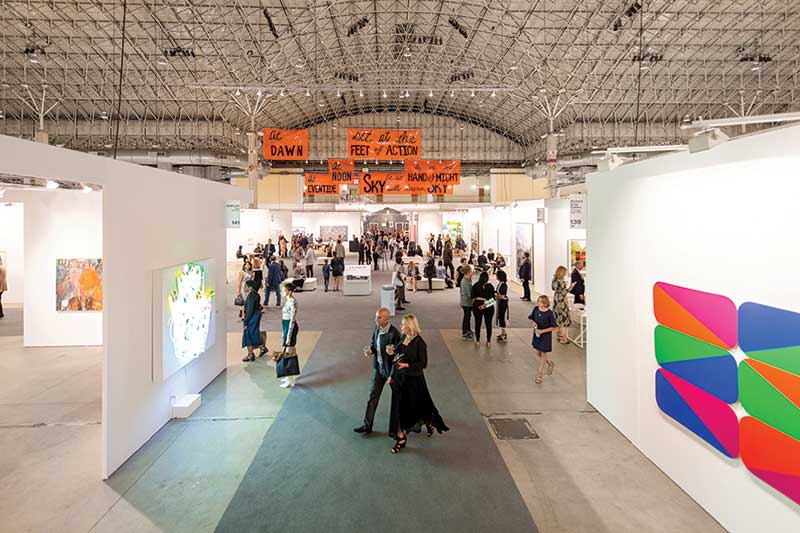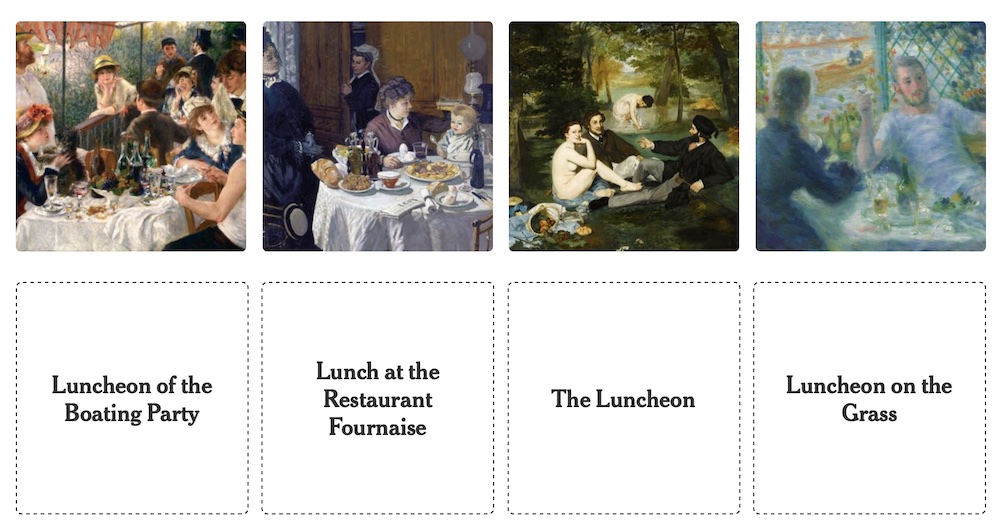Hello EXPO CHICAGO: A Fair Returns To Spring


By BIANCA BOVA
This April EXPO CHICAGO returns to Navy Pier. It is set to be a substantial ninth edition, with 140 galleries representing 25 countries slated for inclusion. As is the case with most public experiences the pandemic forced onto hiatus over the last two years, the version that comes back will inevitably differ in some ways from its former self. The most notable difference, however–the fair being held in April rather than September–is not a radical departure from the old Art Expo, so much as it is a second kind of return.
Founded by the print dealer John Wilson, the Chicago International Art Exposition–the city’s first contemporary art fair of note–premiered in the spring of 1980 at Navy Pier. The show established itself quickly, attracting 80 dealers and 10,000 visitors in its first year. In 1982, Wilson’s colleague Tom Blackman took the reins, steadily laying the groundwork for what would become Art Chicago. Under Blackman’s directorship this new fair ballooned to 220 exhibitors by the year 2000, and shortly thereafter it relocated from Navy Pier to Butler Field in Grant Park, where it was held in a purpose-built tent, still a novel choice of venue at the time.
By 2004, however, its exhibitor list had begun to dwindle, and in 2006, days before the fair was to open, construction of the tent at Butler Field was halted and rumors flew about Blackman’s serious financial troubles. Overnight, the fair was relocated unceremoniously to the Merchandise Mart. Shortly thereafter, it was announced that Merchandise Mart Properties Inc. (MMPI) would buy the fair from Blackman.
The following years saw Art Chicago subsumed in Artropolis, a five day long event at the Merchandise Mart that also encompassed versions of the Bridge Art Fair Chicago, The Intuit Show of Folk and Outsider Art, and The Artist Project Independent Artist Exhibition + Sale, among others. This carried on with variations until 2011, when MMPI announced it would no longer produce the event.
In 2012 EXPO CHICAGO debuted as the latest heritor to the legacy of Chicago art fairs, under the directorship of Tony Karman. It swiftly redoubled Chicago’s reputation as a global contemporary art destination and brought the fair back to its former home, Navy Pier’s hanger-like Festival Hall (a slick space that subtly recalls the industrial charm of the “sheds” that still ran the length of the Pier in its earliest days as a fair venue). EXPO has been, from its inception, a well-rounded fair, introducing in its inaugural edition a robust selection of on-site programming with its /Dialogues series, and the presentation of a slate of curated large-scale installations with its IN/SITU program. In the years between its establishment and its postponement in 2020, EXPO swiftly attracted blue chip galleries (counting among its exhibitors the likes of Gagosian, David Zwirner, and Hauser & Wirth), and grew to include sections of the fair dedicated to young galleries (Exposure), solo presentations of notable artists (Profile), and books and editions. It has become host to a Museum Directors Summit and a Curatorial Forum, the latter in partnership with Independent Curators International. It began a regular alignment with the Chicago Architecture Biennial in 2017, saw satellite fairs pop up (most notably NADA’s inaugural Chicago Gallery Invitational in 2019), and became the central event around which Chicago’s Gallery Week (and art world in general) orbit.
EXPO didn’t disappear during the pandemic. Like many others, it maintained operations with online editions in 2020 and 2021 (a model which, while effective from a business standpoint, once led an art dealer from New York to confide in me that it made her “want to put a nail gun to [her] head.” A sentiment she was far from alone in). Naturally there was much speculation as to when it (and indeed, all art fairs) could resume normal operations. The April 2021 news that the fair would return in-person one year later was met with a collective sense of relief from the industry.
For those of us who are members of the Chicago chapter of the art world, EXPO 2022 is set to be a kind of homecoming. A return to the old ways of being social and doing business. There is the strange summer camp aspect of being back together with the same 200 people that you only ever see in the context of the fairs, eight or ten times over the course of a year, in half a dozen cities spread out across the globe. Outside of the fair itself there is the ever-lengthening itinerary of dinners to attend and gallery hopping to do and cocktail hours at the homes of collectors to occupy your evenings. For a certain (younger) set, add to this a string of after parties and late night warehouse discos that keep you out until 2am, despite knowing you’ll be back on your feet in the lobby with a cup of coffee in hand, ready for another day on the show floor no later than 7am. There is the endless flow of gossip and mythic stories of affairs between dealers who only see each other at EXPO and Basel. And there is, as the most glorious kind of afterthought, the art.
Art fairs belong categorically to the world of trade shows (anyone who tells you otherwise is being paid to, I promise), and the reality of their commerce means most of the works on view are destined for private collections. For every opportunity to round a corner and be suddenly, shockingly lovestruck when confronted with, say, a work by Janine Antoni at Luhring Augustine or an early Tom Wesselman at Tina Kim, there is a melancholic realization when you inevitably notice the accompanying red dots. When you pause to appreciate them, as you dash between your post and the Champagne counter, you are wishing the works a fond farewell; they may be gone and the booth rehung by the time you come back to refill your glass. In three days time, they could be anywhere. This, of course, only adds to their allure. In a quiet way, this experience–more than the thrill of closing a big sale, or of acquisition, or the familial nature of the event itself–is why many of us missed the fairs.
So then, the return of EXPO Chicago is a joyful occasion, a lifting of the limitations of the last two years, a welcome reacclimation to a certain lifestyle. And moreover, it feels in keeping with the fair’s historically resilient nature. Through many owners and many iterations, through many venues and formats, Chicago has always held a space for the art world to gather, once a year, at the fair. This time it will be at EXPO.
April in Chicago. Be here. Again.






